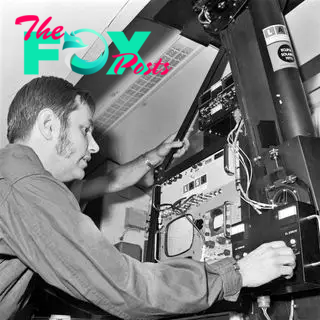Science
Longest eclipse ever: How scientists rode the supersonic Concorde jet to see a 74-minute totality
Flying a plane into the moon's shadow during a total solar eclipse is a hot topic thanks to the upcoming solar eclipse on April 8. JSX has a dedicated eclipse flight over Dallas, and both United Airlines and Delta have long sold out tickets for scheduled flights through the path of totality on journeys from Texas to the Northeast.
But none will come close to achieving what Concorde 001 did on June 30, 1973, when it raced the moon's shadow along the Tropic of Cancer during a total solar eclipse.
Flying at 55,000 feet (17,000 meters), the world's fastest supersonic jet extended the duration of totality from a maximum of 7 minutes, 4 seconds on the ground to a stunning 74 minutes.
For the seven observers from France, Britain and the U.S., the flight broke the record for the longest total solar eclipse in human History. With the supersonic jet long retired from service, Concorde's historic 1973 flight remains legendary for eclipse chasers.
Record-breaking flight

On June 30, 1973, Concorde took off from Las Palmas, Gran Canaria, in the Spanish Canary Islands.
The path of totality that day was about 156 miles (251 kilometers) wide where Concorde intercepted it, with the moon's shadow moving at about 1,500 mph (2,400 km/h). Concorde flew at 1,350 mph (2,200 km/h) — Mach 2 — along the path of totality in the same direction as the moon's shadow, thereby keeping up with it as long as possible.
Related: What's the longest solar eclipse in history? (And how does the April 2024 total eclipse compare?)
-

 Science2d ago
Science2d agoInside Capitol Hill’s Latest UFO Hearings
-

 Science2d ago
Science2d agoYou Won’t Want to Miss the Leonid Meteor Shower. Here’s How and When You Can See It
-

 Science3d ago
Science3d agoHere’s What Trump’s Win Means for NASA
-

 Science6d ago
Science6d agoWhy Risky Wildfire Zones Have Been Increasing Around the World
-

 Science6d ago
Science6d agoIt’s Time to Redefine What a Megafire Is in the Climate Change Era
-

 Science1w ago
Science1w ago4 Astronauts Return to Earth After Being Delayed by Boeing’s Capsule Trouble and Hurricane Milton
-

 Science1w ago
Science1w agoThe Elegance and Awkwardness of NASA’s New Moon Suit, Designed by Axiom and Prada
-

 Science1w ago
Science1w agoSpaceX Launches Its Mega Starship Rocket. This Time, Mechanical Arms Catch It at Landing



























